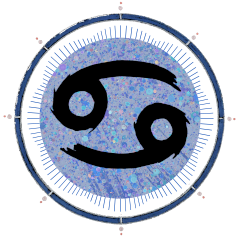Dear Friend and Reader:
LAST WEEK’S YOUR SIGN IS WRONG HOAX spread like feathers at a pillow fight was a rare trip through the news for the craft of astrology. Every now and then our old profession gathers a little attention, usually due to a misunderstanding or a prediction someone has made. Once it happened because a president’s wife was discovered to have been using an astrologer. This time, once again, it was because an astronomer announced that the dates for the Sun signs were wrong. The whole show added up to an interesting social experiment.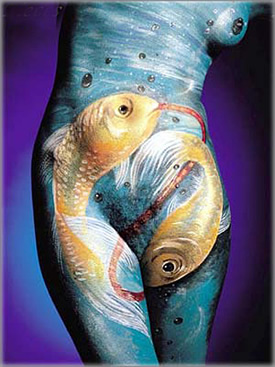
I got several requests for comment from newspapers, and was quoted by the Associated Press and the Minneapolis Star-Tribune (which did the story that went viral, rewriting a barely noticed earlier story). Yet other places ran TV segments on the issue without even consulting an astrologer. Since this is a story that is all about astrology, you don’t have to be a media critic to realize that’s a little weird. Often astrologers seem doomed to the fate of prostitutes — to be regarded as invisible. But we forget that the likes of Ben Franklin, Sir Isaac Newton and Johannes Kepler were astrologers.
“You don’t go to a plumber to ask how to remove a spleen. The fact that they’ve gone to astronomers and taken their word as gospel is quite biased,” said Diana Brownstone, a New York City-based astrologer. She said CBS News contacted her, then said they pulled the story because they couldn’t find an astronomer to be on the program. Then they ran it anyway, with neither an astrologer nor an astronomer commenting — just their usual pundits. This kind of free-form coverage resulted in a diversity of delightfully know-nothing statements such as, “The shift isn’t new, [astronomer Parke] Kunkle says — the zodiac world just hasn’t taken the wobble into account.” The zodiac world? How would they know? How many astrologers did they talk to?
More accurate pieces got traction in the alternative media and in the blogs, which pretty much called the issue what it was — misinformation at best. But with an extra 80,000 people finding my “The World is Flat” article as a result of the fuss, I was having a lot of fun.
An Identity Crisis?
Most interesting was the panic that ensued with the release of this news. Plenty of people actually took seriously the notion that they might be someone else because of a vast cosmic error. The news created a kind of astrological identity crisis that had far more reach than the efforts of astrology to clarify the issue.
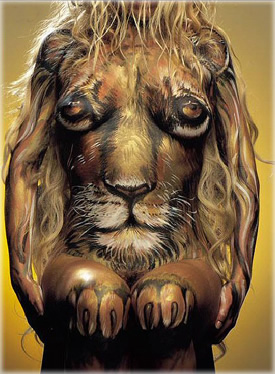
One frantic reader of Yahoo news wrote, “What I don’t understand, and is kinda freaking me out is that everyone sign seem to have changed, but mines is still the same. Whats up with that?? Should I be worried???”
In addition to sparking chaos in the lives of those who have heard of astrology but not astrologers, another result was to immerse our mysterious craft into even deeper murky depths of mystery than usual. But it also brought attention to astrology, it revealed how much people really do identify with the stuff, and it raises an interesting technical issue that has some cool possibilities for creative play.
The bottom line on this is that astrology is a symbolic system borrowing from many traditions. There are lots of these systems, and there are many forms of astrology. The issue is not whether one method or technique is right or wrong, no more than Korean food is inherently better than Japanese food. It’s all about the chef, the ingredients and the company at dinner. Divination systems don’t tell you who you are; they provide a way to help you discover some possibilities. As for astrology, there are many factors other than the Sun sign. I’ve never heard of anyone panicking because they found out they had a Moon sign.
However, finding out about the Year of the Mouse has some people on edge.
Let’s take this edition and sort out a few of the issues involved. I covered some of them briefly last week. There were two relatively minor errors in my original story that I will clarify.
Here is something to keep in mind: you’ve already heard about one of the central issues involved, long before last week. You’ve sung at least a few lines from one particular song that was inspired by a phenomenon being described.
The curve thrown to astrologers and their readers last week was double, and by the way, it was a gag approximately as original as a Whoopee Cushion. First, there was the assertion that due to changes in the Earth-Sun alignment, all the signs are out of whack. The other was astronomers adding (once again) a supposed ’13th sign’ to the zodiac — Ophiuchus. They are at once different and related. Like all good lies, both have a basis in truth. Notably, they have appeared separately, but to my knowledge, not together. So that was sort of original; the Whoopee Cushion meets the exploding cigarette.
Let’s take the issues one at a time.
There Are Two Zodiacs
Without going too deeply into the factually mucky ‘your sign is wrong’ rumor, it basically went like this. Because of changes in the Earth-Sun alignment over the past 2,000 years, all the signs we use are out of whack with the constellations. The ancient Babylonians allegedly ‘intended’ for the meaning of your sign to come from the actual constellation of stars associated with the name of the sign, with which it once aligned; but now due to the Earth wobbling on its axis, the whole system has drifted. Therefore (presumably) your sign is wrong.
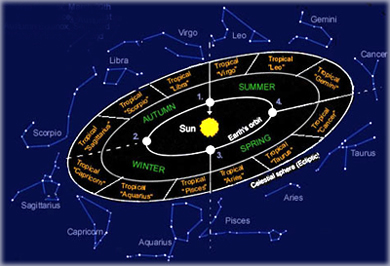
Let’s forget that back in Babylon there were no newspaper horoscopes, and psychological astrology (what we do today) was waiting for the 20th century to come along. People were probably not chirping ‘what’s your sign?’ at ancient Babylonian cocktail parties.
Anyway, here is the basis in truth. There are two zodiacs. Every reasonably serious astrology student and many casual readers know this. One is called the Western or tropical zodiac (the one commonly used in the United States, the UK, Europe, Australia and elsewhere). The other is called the Vedic or sidereal zodiac (the one used in India). They are part of surprisingly similar systems with many common symbols and are grounded in the same basic concepts, such as the number 12. Both have four elements (earth, air, fire, water) and three triplicities, or types of sign (cardinal, fixed, mutable).
However, the starting point of the sidereal horoscope is measured based on the constellations, and the tropical zodiac is measured based on the seasons. Sidereal means stellar and tropical means based on the tropics, which is how we measure the four seasons.
The ancient Babylonians knew about — and likely developed — both systems; we don’t know which is older, except we do have a clue. Back in Babylon (modern day Iraq, also called ancient Chaldean civilization), agriculture, which depends on the seasons, was an important consideration. It was so important that the Chaldeans are credited with inventing writing so they could record farming methods for later generations. The tropical zodiac was used as a device to measure the seasons — as it is today.
The tropical zodiac begins with something called the Aries Point. You’ve heard this term a lot here; it’s sensitive, because it’s the place where the two zodiacs are reckoned. The Aries Point (also called the Sidereal Vernal Point or SVP) means ‘the apparent position of the Sun on the first day of spring’. Its position is the first degree of the tropical wheel. We measure everything in the tropical zodiac from there. For example, yesterday was the first day of the Sun in Aquarius; the Sun had moved 300 degrees from the Aries Point, or 10 signs of 30 degrees each, with about 60 days till the first day of Northern Hemisphere spring. It is an orderly system based on real events. What the Chaldeans apparently didn’t know was that the seasons and indeed our whole calendar drifts within the backdrop of the stars. That knowledge doesn’t come till hundreds of years later.
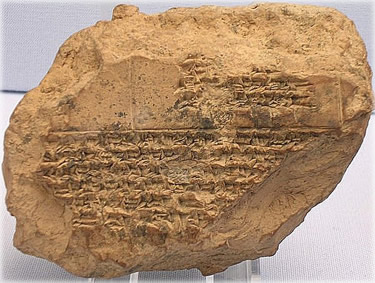
At the time the Babylonian astrologer/astronomer folks were setting up the system, the two zodiacs were more or less aligned. The astrological sign Aries aligned with the constellation Aries. Then, because of a celestial cycle called precession, they gradually shifted out of alignment. Today, in fact, the two zodiacs are 23 degrees out of alignment. If you’re born during the first 23 days of Capricorn, for example, and you go to India and get a reading they will tell you that your Sun is in Sagittarius.
Note that there is a distinction between a sign and a constellation. Here is how Rob Hand, astrology’s Papa Smurf, explains it: “A sign in astrology is now and always has been exactly 1/12th of the circle, or 30 degrees of 360 degrees. A constellation consists of a visual figure, such as a ram, bull, crab, archer, etc., superimposed upon the stars by the human imaginations of many different cultures.” This is easy, right?
One issue with the constellations is that they vary greatly in size. For example, the constellation Scorpio takes up six degrees of the sky. The constellation Virgo takes up 43 degrees of the sky. None of them are 30 degrees. This created a problem for those trying to measure both time and attributes of nature; they needed some consistency.
Hence, the concept of a sign was developed and incorporated into the evenly-divided wheel of the tropical zodiac. The early Vedic astrologers had to address the same problem of these inconsistently sized constellations. They too divided the sky into 12 even 30-degree slices, but imposed those on the constellations. So, while the actual constellations vary in size, the sidereal zodiac is created by dividing the wheel into 12, just like the tropical zodiac. They just have different starting points.
A Wheel Inside a Wheel
Because the axis of the Earth wobbles, very slowly, the seasons and indeed our whole calendar drifts within the backdrop of the stars. That is to say, every 72 years, the Aries Point moves backwards against the backdrop of the stars by one degree.
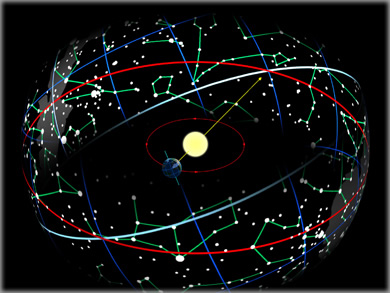
This is called precession, or more accurately, precession of the equinoxes. The effect is that the tropical zodiac is moving like a carousel inside the amusement park of the sidereal zodiac. It takes about 26,000 years for the carousel to go around once. This is called the precessional cycle, and it’s related to the astrological ages — for example, the dawning of the Age of Aquarius. (It’s also related to the 2012 phenomenon — that, another week.) Note, last week I made an error and said that the first day of spring comes one day earlier every 72 years, and that in 12,000 years Christmas would fall in the middle of summer. You can forget I ever said that. In actual fact, the seasons and the calendar are part of the same system that precesses one degree every 72 years.
As for the Age of Aquarius. What is this about? On the first day of spring (when the Sun reaches 1 Aries of the tropical zodiac, or the Aries Point) the Sun is also aligned with the constellation (and the sidereal sign) Pisces. It’s been that way for nearly 2,000 years — this has been the Age of Pisces. Because of precessional movement, the Aries Point is gradually — very gradually — moving retrograde from early (sidereal) Pisces toward (sidereal) Aquarius. It’s not going to get there for a while; if we use precession of the Aries Point against the sidereal zodiac as a way to measure the Age of Aquarius, there are about 600 more years of the Age of Pisces. If we use precession as the only factor, we’re clearly jumping the gun. Yet the Age of Aquarius effect may well be a real thing, however, indicated by many other factors.
So, in a sense the astronomers are right: there is a second zodiac and its existence is common knowledge. But the tropical zodiac, rather than being wrong, is time honored, and it was invented by the Babylonians. It’s a well-designed measurement system, and it works beautifully as a framework within which to tell the story of the world because it follows one of our most poignant experiences on Earth, the turning of the seasons.
But are astronomers really saying that astrology has more validity if we use the sidereal zodiac, or the constellations? Astronomers who take this view are either saying that 1) in their left-handed way, astrology has validity and/or 2) they really think that there is an archer in Sagittarius and a bull in Taurus –that’s why (they are, apparently, claiming) the constellations work better than the signs.
Working with the Two Zodiacs
Making astrology real and useful is all about interpretation. If we start with the fact that there are two zodiacs, tropical and sidereal, then we have something else we can interpret. Much of tropical Aries, for example, overlays sidereal Pisces. That’s a little like saying that if you scratch off the surface of an Aries, you will find something Piscean.
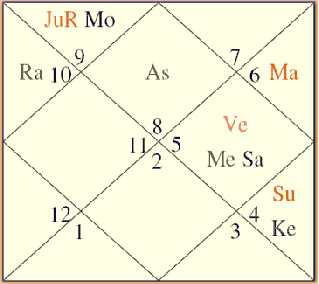
Others take the view that one’s horoscope cast in the tropical system is more about the personality, and the sidereal horoscope gives a picture of a deeper level, such as the soul. Most astrology students will sooner or later cast their sidereal chart to see what is there, and it’s always interesting. The aspects and houses are familiar; most of the signs will be bumped back one.
Many people who follow astrology will eventually get a reading from a Vedic astrologer, which as mentioned uses the sidereal horoscope and ignores the tropical horoscope. The two viewpoints can offer different perspectives. Vedic astrology has completely different spiritual principles, like the firm belief in fate. It’s not a psychology exercise, like modern Western astrology is. For its part, modern Western astrology emphasizes things like choice, growth and getting to know oneself. A Vedic astrologer is a better person to ask when you will get married, how many children you’ll have and when to start a business. Predicting the time of death is not taboo like it is in modern Western astrology. Note also that Vedic astrology ignores all newly discovered planets (Uranus, Neptune, Pluto, Chiron, etc.), meaning that the slowest planet it uses is Saturn. However, it applies many other cycles and concepts.
One of my first astrology clients, artist Billy Name, is fond of saying that his tropical chart was like a bright tattoo that he got when he was much younger. Later in life, he says his sidereal chart reflects more of who he’s become. He’s saying he’s outgrown his tropical chart and grown into his sidereal chart. I think this is a healthy outlook and reflects his creativity and open-minded approach to astrology, which he loves to play with. Other approaches to the theme of growth are working with transits and the progressed horoscope.
If you study astrology, you see all kinds of layering effects going on, and the tropical/sidereal theme is just one of them. Even in a basic chart, the houses and the signs overlay one another; and if you follow an older system called whole sign houses (a topic for another article) you can get a third layer. Add the sidereal signs and you get a fourth layer. A good astrologer can juggle all of this at once.
Another way to look at the tropical/sidereal issue involves how the signs influence one another. Let’s use Aries as an example, 23 degrees of which cover sidereal Pisces. The implication here is that if you’re born during the first 23 days of Aries, your Sun will be in the sidereal sign Pisces. But you don’t need to look at a sidereal chart to see this effect working.
When I delineate the properties of Aries for horoscopes and reports, I consider the influence of the 12th solar house of Aries — which is Pisces, to my mind representing a veiled aspect of Aries. I also look at Taurus, the 2nd solar house of Aries, to get a sense of the values system. In other words, I don’t just draw attributes of Aries from Aries alone; I look at the neighboring signs, since these concepts are not operating in a vacuum. I have methods of doing this for all the signs.
So whether you consider tropical Aries as overlaying a bunch of sidereal Pisces, or tropical Aries as having tropical Pisces as its 12th solar house, you have the same basic effect. Still, these things are the maps, not the adventure. They are symbols and signposts and clues and hints and ideas, and a place to let your imagination run wild.
The Thirteenth Sign?
Part two of the hoax was the addition of a “13th sign” to the mix. Apparently not understanding that the tropical zodiac is separate from the constellations, or admitting that it exists at all, astronomers informed us that there is a 13th constellation, Ophiuchus — and that therefore this means there must be a 13th sign. That does not follow logically. Even if you really dig Ophiuchus (prohounced oh-fee-you-cus), a word that means snake-handler (much like Aquarius means the Culligan man), that doesn’t make it a sign.
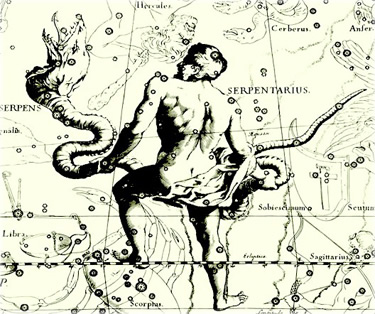
Tropical or Western astrology honors all kinds of stars in the sky that are not officially part of signs. And interestingly, these fixed stars often have meanings totally different than the constellations they are part of.
As for Ophiuchus, “Owen Rachleff proposed this in 1973 in his book Sky Diamonds,” says Rob Hand, who remembers the incident. “It was not accepted by astrologers at that time and the notion faded away. Now it’s back, and younger astrologers will have to decide its fate.” Nor was Ophiuchus accepted by the ancient Babylonians, or the Vedics.
It keeps coming back. According to Jonathan Cainer, it was floated again in the late 1990s by a sci-fi author named John Sladek — a satire writer who died in 2000. Sladek liked to prank astrology, and he has a whole novel about a fictitious 13th sign based on Ophiuchus he called Arachne that was, in his novel, ‘suppressed by the scientific community’. With a wee bit of help from the Royal Astronomical Society, that bit of disinformation made newspapers worldwide.
However, when it surfaced once again last week, Ophiuchus panicked astrology fans, giving them another reason to think that the dates of the signs really had to be rearranged.
By now you get the idea — the constellations don’t determine the tropical signs. They’re related; some of them have the same names as the signs; but the zodiac we use is based on the seasons.
Now, it’s true that Ophiuchus touches the ecliptic — barely. But it has never been considered a constellation worthy of consideration under any traditional system. That doesn’t mean we can’t try it out. Of course we can experiment (as astrology has done for millennia with other fixed stars, and as we do today with things like the Galactic Center) — but it’s a good idea to remember the difference between a sign and a constellation is not splitting hairs; they are two kinds of critter entirely.
The tropical, sidereal and even Chinese systems are based on a cycle of 12, a concept which Hand says was “running around everywhere” in the ancient world. It was natural — as a creation of the human mind, which loves symmetry — that the zodiac would be simplified into a system of 12 equal parts. Twelve is not a prime number; it can be divided many ways with ease, and is the basis for the creation of aspects. For example, a square is a distance of three signs; a trine is a distance of four signs; an opposition is a distance of six signs.
Remember Your Philosophy — and Remember Nature
“The zodiac evolved when the evolution of human consciousness reached a point where there was a sense of mathematics and geometry that offered an abstract view of the universe,” said David Arner, a New York-based astrologer and one of my teachers.
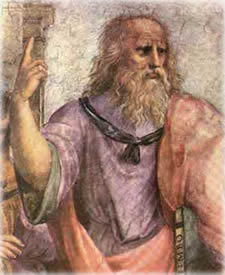
“This eventually led to the whole philosophy of the Western world, which dealt with the differences between the appearances of things and the reality, and this is what Plato was grappling with. Everyone in the intellectual world had to cope with this. Coming on the 19th and 20th centuries, we kind of forgot that the cosmos seems to have these two realities. One of them is what you can see and the other is what you can conceive of.” The sidereal constellations are in the first category; the tropical signs are in the second.
“What the eye can see are a number of constellations of different sizes. What we idealize mathematically is a horoscope of 12 equal signs,” he said.
“The idea of saying that there are supposed to be 13 signs is ludicrous. That is not a number that we live in. We live in a world in our minds, and we know that there’s a symmetry that is real. So 12 is a number that reflects the symmetry and all of its parts, and 13 just doesn’t do that. It does other things, but it doesn’t do that.”
One of the things it doesn’t do is change who you are. If you identify with a snake handler, then you have something to explore — and of course, there is more to every symbol than meets the eye. Surely, being able to tame a dangerous viper is a skill that would come in handy in our current social and political environment. And, obviously, the snake represents the vital force, kundalini, and is a frequent image of sexuality. The ‘snake master’ is someone who can handle this energy. It’s an interesting image to have right next to Scorpio, the sign that represents self-mastery through the awareness of sexuality, death and transformation. These are themes for all seasons.
Yet if you’re doing Western astrology, the thing to remember is that our concept is based on cycles related to the seasons. These are are actual events both in concept and in physical reality. Rob Hand gives a beautiful image of how this looks.
“As the Earth moves about the Sun the seasons change,” Hand wrote in a recent article. “If you could speed up this motion and look at the Earth from space, you would see on the continents a movement of green (from vegetation) moving up and down. At the beginning of the Northern Hemisphere’s spring (beginning of Sun in Aries) you would see it moving up to the north of the equator, reaching its greatest development in the north at the beginning of the northern hemisphere’s summer (Sun in Cancer). Then it would begin to move south until at the beginning of the northern autumn, the southern hemisphere’s spring (Sun in Libra) it reached the most southerly part at the beginning of the southern summer (Sun in Capricorn). After that the belt of green begins to move north again. This is the “pulse of life” that the late Dane Rudhyar referred to in his book of the same name. We believe that the origin of the qualities that astrologers associate with the signs comes from this movement of life’s energy on Earth. In the last analysis, the zodiac may not be so much due to the astronomy by itself as it is to the Earth’s biosphere. The signs are simply a measure of where we are in the year and the flow of life on Earth as it relates to the heavens.”
Yours & truly,
![]()
![]()
Weekly Horoscope for Friday, January 21, 2011, #847 – BY ERIC FRANCIS
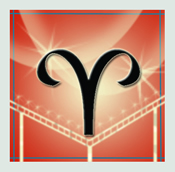 Aries (March 20-April 19) — Imagine you’re a boat — a gorgeous, well-made vessel, sitting on the floor of a dry sea. There are places you’ve been, and places you want to go. But you’re stuck. Now, imagine that there is water rising, like a miracle. It’s a calm, gentle flood, soaking the dry land and turning it back into the ocean that it once was. You float up on the water effortlessly. You’re finally free. It’s an amazing feeling, your sensation of mobility and buoyancy. It’s a little like weightlessness, but there’s the solid feeling of being upright and in equilibrium. You could go anywhere, and you directly feel that potential. The sensation of any possibility being open, of any destination being available, feels so good, you don’t have to think about the future, or about the past. You don’t need a strategy. The moment calls for faith in your quest, whatever that turns out to be.
Aries (March 20-April 19) — Imagine you’re a boat — a gorgeous, well-made vessel, sitting on the floor of a dry sea. There are places you’ve been, and places you want to go. But you’re stuck. Now, imagine that there is water rising, like a miracle. It’s a calm, gentle flood, soaking the dry land and turning it back into the ocean that it once was. You float up on the water effortlessly. You’re finally free. It’s an amazing feeling, your sensation of mobility and buoyancy. It’s a little like weightlessness, but there’s the solid feeling of being upright and in equilibrium. You could go anywhere, and you directly feel that potential. The sensation of any possibility being open, of any destination being available, feels so good, you don’t have to think about the future, or about the past. You don’t need a strategy. The moment calls for faith in your quest, whatever that turns out to be.
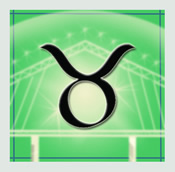 Taurus (April 19-May 20) — This week you just might burst a bubble of old karma passed along by your family. There are many ways these things get passed down, depending on the school of thought or tradition you tap into for a model. Karma is real, though in our culture what often passes for the stuff are really multigenerational emotional patterns passed down over the years — in a few words, household products that can mark us for life. These include values, the well-documented influences of alcoholism and lesser-documented influences of religion, but it all amounts to the same thing: we are burdened with material from the past, and if we want to be functioning adults, we must let it go and create a new perspective. This will change how you see the world, which in turn will change your experience of the world. And thankfully the resolution can happen a lot faster than the situation itself developed.
Taurus (April 19-May 20) — This week you just might burst a bubble of old karma passed along by your family. There are many ways these things get passed down, depending on the school of thought or tradition you tap into for a model. Karma is real, though in our culture what often passes for the stuff are really multigenerational emotional patterns passed down over the years — in a few words, household products that can mark us for life. These include values, the well-documented influences of alcoholism and lesser-documented influences of religion, but it all amounts to the same thing: we are burdened with material from the past, and if we want to be functioning adults, we must let it go and create a new perspective. This will change how you see the world, which in turn will change your experience of the world. And thankfully the resolution can happen a lot faster than the situation itself developed.
 Gemini (May 20-June 21) — The more you expand your vision, the more nervous you’re likely to become — and that’s precisely how you’ll know you’re really doing it. When you step into new territory, you might feel excitement, and you might also feel the fear of punishment or a backlash (that would be guilt) or a shaky sense of embarking on the unknown (that would be dropping an ego shell and feeling vulnerable). What I suggest you look for is the sense that you’re guided to where you’re going. That guidance might hand you a simple strategy; the strategy will have elements of traditional thought that allow you to develop what is in truth a fairly radical or innovative idea. In my view the two go together. Effective revolutionaries are almost always traditionalists. Remember that there’s something truly organic about what you’re creating.
Gemini (May 20-June 21) — The more you expand your vision, the more nervous you’re likely to become — and that’s precisely how you’ll know you’re really doing it. When you step into new territory, you might feel excitement, and you might also feel the fear of punishment or a backlash (that would be guilt) or a shaky sense of embarking on the unknown (that would be dropping an ego shell and feeling vulnerable). What I suggest you look for is the sense that you’re guided to where you’re going. That guidance might hand you a simple strategy; the strategy will have elements of traditional thought that allow you to develop what is in truth a fairly radical or innovative idea. In my view the two go together. Effective revolutionaries are almost always traditionalists. Remember that there’s something truly organic about what you’re creating.
 Cancer (June 21-July 22) — Authentic exchange requires trust, and — if you follow it — that leads to daring. However, it’s important for you to get these two in order, that is, trusting first and daring later. Trust does not mean certainty. It’s a quiet confidence that feels halfway between the absence of doubt and an odd kind of assurance. When you trust, you just know — and that is despite any apparent circumstances. The thing to remember is that trust requires vulnerability; on one dimension, they are one and the same. Part of that vulnerability is openness to the feelings and experiences of the people you know. In your particular situation at the moment, there’s something about recognizing what so many people have in common with you. The struggles, desires, need for healing. Once you establish this common ground with people, or even notice it, something unusual is poised to happen, which is about community and sharing mutual purpose — a very satisfying thing for you.
Cancer (June 21-July 22) — Authentic exchange requires trust, and — if you follow it — that leads to daring. However, it’s important for you to get these two in order, that is, trusting first and daring later. Trust does not mean certainty. It’s a quiet confidence that feels halfway between the absence of doubt and an odd kind of assurance. When you trust, you just know — and that is despite any apparent circumstances. The thing to remember is that trust requires vulnerability; on one dimension, they are one and the same. Part of that vulnerability is openness to the feelings and experiences of the people you know. In your particular situation at the moment, there’s something about recognizing what so many people have in common with you. The struggles, desires, need for healing. Once you establish this common ground with people, or even notice it, something unusual is poised to happen, which is about community and sharing mutual purpose — a very satisfying thing for you.
 Leo (July 22-Aug. 23) — This time of year always puts special emphasis on your relationships. And there is a lot to focus on now. You also have plenty to celebrate, because you’re finally getting a handle on what you want, what you need, and what concepts (I was going to say structure, or boundaries, but let’s include them under concepts) work the best for you. The beauty of the moment is that this is not in a defensive way; you’ve suddenly developed the capacity to handle passion without getting nervous, and to understand commitment as a thing that flows and changes with circumstances. You know that what you put out, you get back, not in theory but in practice. You can, over the next few weeks, look right at anyone and any feeling they might express and call it precisely what it is. Again, this is not defensive — it is factual, as evidenced by your lack of emotional attachment to what you observe. The feeling is more like, ah! That’s what that is! And this is how I want to respond.
Leo (July 22-Aug. 23) — This time of year always puts special emphasis on your relationships. And there is a lot to focus on now. You also have plenty to celebrate, because you’re finally getting a handle on what you want, what you need, and what concepts (I was going to say structure, or boundaries, but let’s include them under concepts) work the best for you. The beauty of the moment is that this is not in a defensive way; you’ve suddenly developed the capacity to handle passion without getting nervous, and to understand commitment as a thing that flows and changes with circumstances. You know that what you put out, you get back, not in theory but in practice. You can, over the next few weeks, look right at anyone and any feeling they might express and call it precisely what it is. Again, this is not defensive — it is factual, as evidenced by your lack of emotional attachment to what you observe. The feeling is more like, ah! That’s what that is! And this is how I want to respond.
 Virgo (Aug. 23-Sep. 22) — You may feel like you can tackle anything at the moment, but I strongly suggest you pace yourself. On the bright side, you have a lot of energy, idealism and some fantastic ideas for what to do, and what to do better. On the other hand, I can see that your energy bodies are processing some healing project. Part of the process is like when you get a piece of glass embedded in your skin and over the course of a few years it gradually comes to the surface. Once it does, it’s an incredibly satisfying feeling of breakthrough that can mark your whole consciousness even though the shard may only be a couple of millimeters long. And if it makes a little injury on the way out, you know that it’s the end of a process that was a long time coming. Meanwhile, over the next few weeks, beware of your ups and downs, sense your energy level as it’s becoming the next state, and respond in advance. If you feel a little tired, stop and take a nap. If you feel a little overwhelmed, take a break. If you feel like you can work for eight hours straight, work for six.
Virgo (Aug. 23-Sep. 22) — You may feel like you can tackle anything at the moment, but I strongly suggest you pace yourself. On the bright side, you have a lot of energy, idealism and some fantastic ideas for what to do, and what to do better. On the other hand, I can see that your energy bodies are processing some healing project. Part of the process is like when you get a piece of glass embedded in your skin and over the course of a few years it gradually comes to the surface. Once it does, it’s an incredibly satisfying feeling of breakthrough that can mark your whole consciousness even though the shard may only be a couple of millimeters long. And if it makes a little injury on the way out, you know that it’s the end of a process that was a long time coming. Meanwhile, over the next few weeks, beware of your ups and downs, sense your energy level as it’s becoming the next state, and respond in advance. If you feel a little tired, stop and take a nap. If you feel a little overwhelmed, take a break. If you feel like you can work for eight hours straight, work for six.
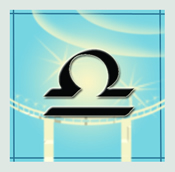 Libra (Sep. 22-Oct. 23) — I have proposed before, as have many others, that the best sex organ is the mind. The senses go there, the nerve endings start up there, the pineal gland is there, and all kinds of fun, interesting, innovative and kinky ideas percolate around. I have also proposed, as have others, that sexuality is the seat of creativity. Sex creates existence. At the moment, about 26 different aspects of this set of facts are coming to the surface. The Sun has entered the already-electrified angle of your chart where all of these experiences usually play out. And play is the word. There are deep emotions involved; you have your history to integrate and develop your ongoing relationship with; you have the adventures you seek, and you have your fears about letting yourself be free enough to go there. Keep your sense of play handy. I suggest you start in your mind, and do your best to make friends with everything that comes to the surface. In our age of paranoia, judgment and manic obsession with control, this is a radical act.
Libra (Sep. 22-Oct. 23) — I have proposed before, as have many others, that the best sex organ is the mind. The senses go there, the nerve endings start up there, the pineal gland is there, and all kinds of fun, interesting, innovative and kinky ideas percolate around. I have also proposed, as have others, that sexuality is the seat of creativity. Sex creates existence. At the moment, about 26 different aspects of this set of facts are coming to the surface. The Sun has entered the already-electrified angle of your chart where all of these experiences usually play out. And play is the word. There are deep emotions involved; you have your history to integrate and develop your ongoing relationship with; you have the adventures you seek, and you have your fears about letting yourself be free enough to go there. Keep your sense of play handy. I suggest you start in your mind, and do your best to make friends with everything that comes to the surface. In our age of paranoia, judgment and manic obsession with control, this is a radical act.
 Scorpio (Oct. 23-Nov. 22) — Though you’re an emotionally driven person, it’s often challenging for you to ground in your feelings. This involves the placement of Aquarius in your solar chart. In short, what this creates is a kind of mental refuge from the intensity of your emotions, and this, in turn, has a way of preventing you from feeling what you might actually be feeling — as a direct rather than conceptual experience. Now, you’re being challenged to do just that. Mars in Aquarius is compelling you to address your deepest insecurities. Don’t shy away from this. In fact, I suggest you embrace the energy as it peaks, because as you face one particular shadow, you will let it out of your psyche and it will never have quite the same power again. I also suggest you notice your resistance; that is, how inclined you are to fight yourself. Remember, that’s where the only struggle really is, and releasing that fight is the only way to make peace with yourself, and as a result, with the world.
Scorpio (Oct. 23-Nov. 22) — Though you’re an emotionally driven person, it’s often challenging for you to ground in your feelings. This involves the placement of Aquarius in your solar chart. In short, what this creates is a kind of mental refuge from the intensity of your emotions, and this, in turn, has a way of preventing you from feeling what you might actually be feeling — as a direct rather than conceptual experience. Now, you’re being challenged to do just that. Mars in Aquarius is compelling you to address your deepest insecurities. Don’t shy away from this. In fact, I suggest you embrace the energy as it peaks, because as you face one particular shadow, you will let it out of your psyche and it will never have quite the same power again. I also suggest you notice your resistance; that is, how inclined you are to fight yourself. Remember, that’s where the only struggle really is, and releasing that fight is the only way to make peace with yourself, and as a result, with the world.
 Sagittarius (Nov. 22-Dec. 22) — For a long time I’ve been writing so much about your creative process, you might think I had access to some hidden file that revealed your imminent acceptance to a painting academy in Paris, or that you might be working one-to-one with George Lucas. Yes, I know something about you. I know how talented you are, I know how much energy you have, and more than that, I know how necessary it is for you to express your full identity through your creative process. You are the kind of person who does not ‘make art’. You become the art you are making, and it becomes you. Now the relationship has the potential to go to the depth of full involvement. You may feel a tangible sense of your own potential. You may have a new understanding of your depth of knowledge, and new material to work with. The piece you will need to bring yourself is the focus and discipline to bring your gifts to fruition. You’ve been working at this longer than you think, and you’re further along than you currently believe. So believe in yourself and act on it.
Sagittarius (Nov. 22-Dec. 22) — For a long time I’ve been writing so much about your creative process, you might think I had access to some hidden file that revealed your imminent acceptance to a painting academy in Paris, or that you might be working one-to-one with George Lucas. Yes, I know something about you. I know how talented you are, I know how much energy you have, and more than that, I know how necessary it is for you to express your full identity through your creative process. You are the kind of person who does not ‘make art’. You become the art you are making, and it becomes you. Now the relationship has the potential to go to the depth of full involvement. You may feel a tangible sense of your own potential. You may have a new understanding of your depth of knowledge, and new material to work with. The piece you will need to bring yourself is the focus and discipline to bring your gifts to fruition. You’ve been working at this longer than you think, and you’re further along than you currently believe. So believe in yourself and act on it.
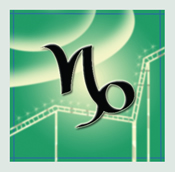 Capricorn (Dec. 22-Jan. 20) — You’re safer than you think. I know that lately you feel exposed to the world, to the elements and to the wild winds of fortune. I know you feel a profound sense of responsibility, perhaps mingled with the drive to succeed that is one part ambition and three parts a matter of something you owe yourself for all your hard work. Still, you feel like there’s a television camera trained on you, and like your integrity is always on the line. That’s not exactly a safe feeling. Yet remember how safe you feel in your own home, in particular, how secure simply being yourself you feel when you’re behind your own doors. Now, imagine that you can take this sensation out into the world, wherever else you may go. Consider how wonderful it would feel to experience the world as a safe place everywhere, despite any potential for uncertainty? That sense of a fully portable safe haven is something you can bring anywhere.
Capricorn (Dec. 22-Jan. 20) — You’re safer than you think. I know that lately you feel exposed to the world, to the elements and to the wild winds of fortune. I know you feel a profound sense of responsibility, perhaps mingled with the drive to succeed that is one part ambition and three parts a matter of something you owe yourself for all your hard work. Still, you feel like there’s a television camera trained on you, and like your integrity is always on the line. That’s not exactly a safe feeling. Yet remember how safe you feel in your own home, in particular, how secure simply being yourself you feel when you’re behind your own doors. Now, imagine that you can take this sensation out into the world, wherever else you may go. Consider how wonderful it would feel to experience the world as a safe place everywhere, despite any potential for uncertainty? That sense of a fully portable safe haven is something you can bring anywhere.
 Aquarius (Jan. 20-Feb. 19) — Notice every woman you meet, no matter how casual the encounter. Be alert to anything more formal than sharing an elevator for 45 seconds, and even that might prove to be noteworthy. Listen for her ideas, and pay attention to the hint that she’s connected to something beyond the obvious. Or, you could consider yourself this person: imagine what it feels like to be connected to your source in a way that lights up others when you shake their hand. Experiment with what it feels like to know your ideas are original and excellent, and to stand in the quiet confidence that brings. Respecting your own ideas and your perception of the world is one of the most basic elements of self-respect. If you hold that feeling, and acknowledge its counterpart in every person you meet, this feeling will grow like a crystal in your mind, your relationships and your circle of friends.
Aquarius (Jan. 20-Feb. 19) — Notice every woman you meet, no matter how casual the encounter. Be alert to anything more formal than sharing an elevator for 45 seconds, and even that might prove to be noteworthy. Listen for her ideas, and pay attention to the hint that she’s connected to something beyond the obvious. Or, you could consider yourself this person: imagine what it feels like to be connected to your source in a way that lights up others when you shake their hand. Experiment with what it feels like to know your ideas are original and excellent, and to stand in the quiet confidence that brings. Respecting your own ideas and your perception of the world is one of the most basic elements of self-respect. If you hold that feeling, and acknowledge its counterpart in every person you meet, this feeling will grow like a crystal in your mind, your relationships and your circle of friends.
 Pisces (Feb. 19-March 20) — Of the many cycles in astrology is a 12-year run — what you might think of as a Jumbo Year. What a difference one of those Big Years makes. What were you doing back then, around 1999? Think about it for a moment, and if you would, consider this. In that moment 12 years ago, did you have any sense of what was about to happen? Could you have predicted where your life would go, the people you would meet, or the adventures you would embark on? You stand today in a similar moment, where a truly original life journey awaits you. This time, you can make your decisions a little more boldly, knowing from the previous cycle that you really are taken care of, that you can make good decisions and that your life works out in highly creative ways you could have hardly ever predicted. You have no need to predict, and you need no reasons to trust.
Pisces (Feb. 19-March 20) — Of the many cycles in astrology is a 12-year run — what you might think of as a Jumbo Year. What a difference one of those Big Years makes. What were you doing back then, around 1999? Think about it for a moment, and if you would, consider this. In that moment 12 years ago, did you have any sense of what was about to happen? Could you have predicted where your life would go, the people you would meet, or the adventures you would embark on? You stand today in a similar moment, where a truly original life journey awaits you. This time, you can make your decisions a little more boldly, knowing from the previous cycle that you really are taken care of, that you can make good decisions and that your life works out in highly creative ways you could have hardly ever predicted. You have no need to predict, and you need no reasons to trust.



